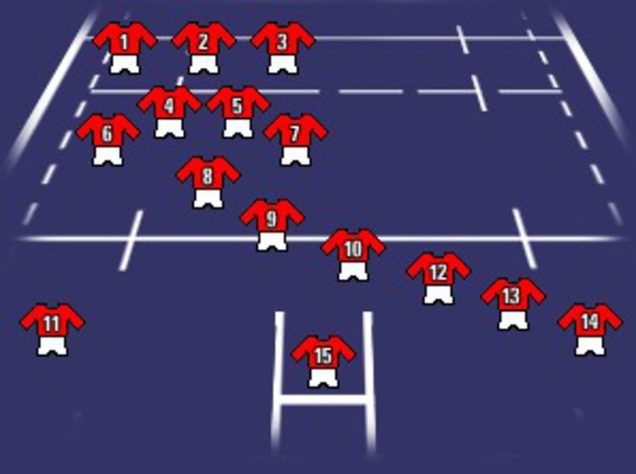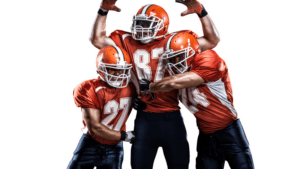If you are interested in getting involved in the sport of rugby, one of the first things a beginner needs to understand is that there are many different positions on a rugby team. Each rugby team is able to put 15 players on the field at a time, and each of these players has an allocated location on the field. The players wear jerseys that have their position number on the backside to identify who they are and where they play.
Rugby Forwards:
Front Row Positions:
- Props: Players # 1 and # 3. To play this position, you need to be strong and know the proper pushing technique. The prop on the left is always loose and the prop on the right is always tight. The props are the players who contest for possession of the ball against the offending team.
- Hooker: Player # 2. The hooker is the player who throws the ball into the line-out and is in the center between the two props. The hooker must strike or “hook” the ball with their leg to get possession of the ball.
Second Row Positions:
- Locks: Players # 4 and # 5. The locks are usually the taller ones on the team. During a scrum, the second row positions go behind the front three (#1-#3) and provide support and power to push the opposition off the ball.
Back Row Positions:
- Flankers: Players # 6 and # 7. These players are at the back of the scrum. When your team gets the ball you must break and carry the ball forward or run to support the other players. When the other team gets the ball, you must break up attacks and regain possession of the ball. The flankers are positioned on either side.
- Number 8: Players # 8. This player stands in the middle of the back row and gets the ball when the offense is winning the scrum.
Rugby Backs:
There are 7 rugby backs on every rugby team. The backs provide the speed and agility for scoring tries, and therefore tend to be the smaller and faster players. Rugby backs are known for being skilled in running, catching, passing, kicking, and tackling.
Half-Backs
- Scrum Half:Player # 9. This player puts the ball into the scrum and when the ball comes out, passes it to the fly-half.
- Fly-Half: Player # 10. This player is responsible for calling the sets of play for the rest of the team.
Three-quarters and fullback
- Centres: Players # 12 and # 13. Centres follow the lead of the fly half and are known for making the tactical moves to break through the defense. They run the ball straight and must be able to catch the ball and pass immediately.
- Wings: Players # 11 and # 14. Wings are known for catching the ball while running at a high speed and bringing it to the end for scoring tries.
- Full-Back: Player # 15. The full-back is the last line of defense and is a major player for attacking and supporting on the field.
CoachUp is the safest and easiest way to find a private sports coach. With our 100% money-back guarantee and vetted coaches, anyone can achieve their full athletic potential. Find your perfect private coach today and become the athlete you want to be!
How useful was this post?
Click on a star to rate it!
Average rating 0 / 5. Vote count: 0
No votes so far! Be the first to rate this post.



